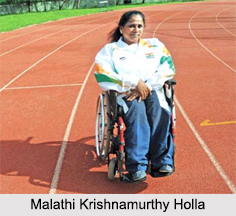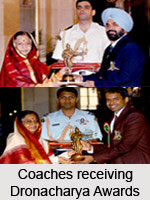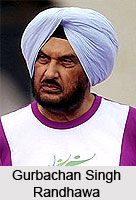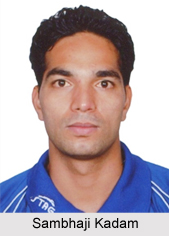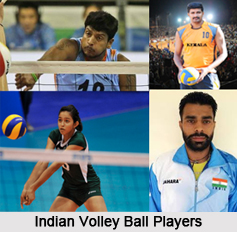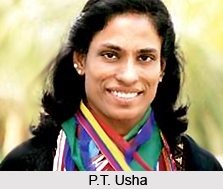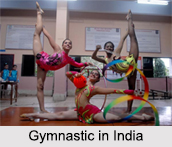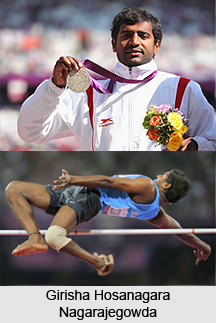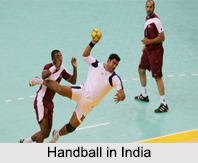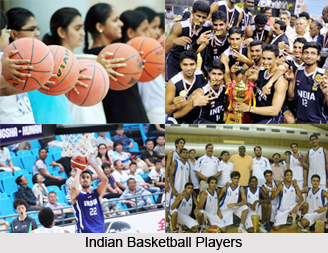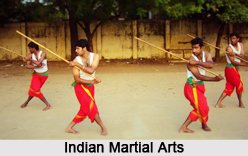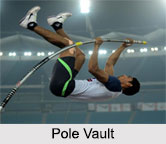Introduction
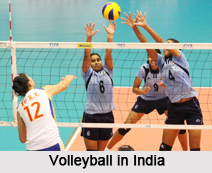 Volleyball in India is a popular sport that is played in various regions of India and several reputed Volleyball tournaments are also organized as well.
Volleyball in India is a popular sport that is played in various regions of India and several reputed Volleyball tournaments are also organized as well.
The physical education instructors who came to Indian from abroad around 70 years ago introduced volleyball in India. Volleyball comprises energetic body movements as well as rapid jumps and leaps. Being a fairly affordable sport, volleyball is played in all parts of the country around the year.
Volleyball in India is played by several educational institutions and the armed forces also. The Indian Volleyball team secured third place and the bronze at the Asian games in 1958 at Tokyo, the year in which the game was first introduced in the event.
Origin of Volleyball
Volleyball originated in the United States. William G. Morgan, a physical education teacher, is credited as its inventor. He devised the game by merging aspects of tennis and throw ball to form an indoor game. The first exhibition match was held in 1896 at Springfield College, Massachusetts, where the game`s use of volleys led an observer to dub it as Volley-Ball.
History of Volleyball in India
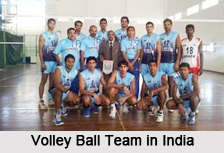 The Y.M.C.A. College of Physical Education in Madras (now Chennai) first began training its students in the sport, which then eventually spread to other parts of the country. Initially, the game was managed by Indian Olympic Association and the Interstate Volleyball Championship was conducted every 2 years, between the years 1936 and 1950. At the time, the Championship was organised for male players only. In the year 1951, the Volleyball Federation of India was established and since then the national team had participated in several international championships like Asian Championship, Commonwealth Games, and Asian Games etc. After Indian independence, the first Indian National Championship was organised in 1952 at Chennai. The game was there upon organised for both men and women. The Indian Volleyball team won Gold medal in 1955, at the Invitation Asian Meet held at Japan. Between 1963 and 1963, none of the Volleyball players received any of the Arjuna Awards, which was considered as a set back to Volleyball in India.
The Y.M.C.A. College of Physical Education in Madras (now Chennai) first began training its students in the sport, which then eventually spread to other parts of the country. Initially, the game was managed by Indian Olympic Association and the Interstate Volleyball Championship was conducted every 2 years, between the years 1936 and 1950. At the time, the Championship was organised for male players only. In the year 1951, the Volleyball Federation of India was established and since then the national team had participated in several international championships like Asian Championship, Commonwealth Games, and Asian Games etc. After Indian independence, the first Indian National Championship was organised in 1952 at Chennai. The game was there upon organised for both men and women. The Indian Volleyball team won Gold medal in 1955, at the Invitation Asian Meet held at Japan. Between 1963 and 1963, none of the Volleyball players received any of the Arjuna Awards, which was considered as a set back to Volleyball in India.
Rules of Volleyball in India
The basic rules of Volleyball in India mention that one team scores point if they throw the ball into the opponent`s court and the opponents fail to throw it back; and can also gain point if any fault is made by the opponent team. The team that scores 25 points first wins the set, and in a 5 setter, the team winning 3 sets also wins the match. Further, a team can touch the ball thrice before it traverses the net but only different players can push the ball in succession. Generally, hands or arms are used to hit the ball but hitting by any body parts is allowed legally since the 1996 Olympics. The volleyball court is generally 18 m long and 9 m wide, parted into two 9 m by 9 m courts. The net is kept 2.43 m and 2.24 m above the centre of the court for men`s and women`s competition respectively. There is also an attack line that is around 3 m from and similar to the net in each team`s court that separates it into back and front row areas.
 The playing area includes the playing court and the free zone. It is rectangular and symmetrical.
The playing area includes the playing court and the free zone. It is rectangular and symmetrical.
Dimensions
The playing court is a rectangle measuring 18 x 9 m, surrounded by a free zone which is a minimum of 3 m wide on all sides. The free playing space is the space above the playing area which is free from any obstructions. The free playing space shall measure a minimum of 7 m in height from the playing surface.
Playing Surface
The surface must be flat, horizontal and uniform. It must not present any danger of injury to the players. It is forbidden to play on rough or slippery surfaces.
Lines on the Court
All lines are 5 cm wide. They must be of a light colour which is different from the colour of the floor and from any other lines.
Boundary Lines
Two sidelines and two end lines mark the playing court. Both sidelines and end lines are drawn inside the dimensions of the playing court.
Centre Line
The axis of the centre line divides the playing court into two equal courts measuring 9 x 9 m each; however the entire width of the line is considered to belong to both courts equally. This line extends beneath the net from sideline to sideline.
Attack Line
On each court, an attack line, whose rear edge is drawn 3 m back from the axis of the centre line, marks the front zone.
Zones and Areas
 Penalty area: A penalty area, sized approximately 1 x 1 m and equipped with two chairs, is located in the control area, outside the prolongation of each end line. They may be limited by a 5 cm wide red line.
Penalty area: A penalty area, sized approximately 1 x 1 m and equipped with two chairs, is located in the control area, outside the prolongation of each end line. They may be limited by a 5 cm wide red line.
Net and Posts
Height of the Net: Placed vertically over the centre line there is a net whose top is set at the height of 2.43 m for men and 2.24 m for women. Its height is measured from the centre of the playing court. The net height (over the two sidelines) must be exactly the same and must not exceed the official height by more than 2 cm.
Structure: The net is 1 m wide and 9.50 to 10 metres long (with 25 to 50 cm on each side of the side bands), made of 10 cm square black mesh. At its top a horizontal band, 7 cm wide, made of two-fold white canvas, is sewn along its full length. Each extreme end of the band has a hole, through which passes a cord, fastening the band to the posts for keeping its top taut. Within the band, a flexible cable fastens the net to the posts and keeps its top taut. At the bottom of the net there is another horizontal band, 5cm wide, similar to the top band, through which is threaded a rope. This rope fastens the net to the posts and keeps its lower part taut.
Side Bands: Two white bands are fastened vertically to the net and placed directly above each sideline. They are 5 cm wide and 1 m long, and are considered as part of the net.
Antennae: An antenna is a flexible rod, 1.80 m long and 10 mm in diameter, made of fibreglass or similar material. An antenna is fastened at the outer edge of each side band. The antennae are placed on opposite sides of the net. The top 80 cm of each antenna extends above the net and is marked with 10 cm stripes of contrasting colour, preferably red and white. The antennae are considered as part of the net and laterally delimit the crossing space.
Posts
The posts supporting the net are placed at a distance of 0.50-1.00 m outside the sidelines. They are 2.55 m high and preferably adjustable.
Balls
The ball shall be spherical, made of flexible leather or synthetic leather case with a bladder inside made of rubber or a similar material. Its colour may be a uniform light colour, or a combination of colours. Synthetic leather material and colour combinations of balls used in International Official competitions should comply with FIVB standards its circumference is 65-67 cm and its weight is 260-280 g. It`s inside pressure shall be 0.30 to 0.325 kg/cm2
A team may consist of a maximum of 12 players, one coach, one assistant coach, one trainer and one medical doctor. For FIVB World and Official Competitions, the medical doctor must be accredited beforehand by the FIVB. One of the players, other than the Libero (each team has the right to designate among the list of 12 players one (1) specialised defensive player "Libero". The Libero must be recorded on the score sheet before the match in the special line reserved for this. The Libero is allowed to replace any player in a back row position), is the team captain, who shall be indicated on the score sheet.
Equipment
A player`s equipment consists of a jersey, shorts, socks (the uniform) and sport shoes. The colour and the design for the jerseys, shorts and socks must be uniform for the team (except for the Libero). The uniforms must be clean. The shoes must be light and pliable with rubber or leather soles without heels.
Team Leaders
Both the team captain and the coach are responsible for the conduct and discipline of their team members. The Libero cannot be the team captain.
To Score a Point, to win a set and the Match
To Score a Point
Point: A team scores a point
By successfully grounding the ball on the opponent`s court;
When the opponent team commits a fault;
When the opponent team receives a penalty
Fault: A team commits a fault by making a playing action contrary to the rules (or by violating them in some other way). The referees judge the faults and determine the consequences according to the rules:
If two or more faults are committed successively, only the first one is counted.
If two or more faults are committed by opponents simultaneously, a DOUBLE FAULT is called and the rally is replayed.
Consequences of Winning a Rally
 A rally is the sequence of playing actions from the moment of the service hit by the server until the ball is out of play. If the serving team wins a rally, it scores a point and continues to serve. If the receiving team wins a rally, it scores a point and it must serve next.
A rally is the sequence of playing actions from the moment of the service hit by the server until the ball is out of play. If the serving team wins a rally, it scores a point and continues to serve. If the receiving team wins a rally, it scores a point and it must serve next.
To Win a Set
A set (except the deciding, 5th set) is won by the team which first scores 25 points with a minimum lead of two points. In the case of a 24-24 tie, play is continued until a two-point lead is achieved (26-24; 27-25 ;...).
To Win the Match
The match is won by the team that wins three sets. In the case of a 2-2 tie, the deciding set (the 5th) is played to 15 points with a minimum lead of 2 points.
Positions
At the moment the ball is hit by the server, each team must be positioned within its own court in the rotational order (except the server). The positions of the players are numbered as follows:
(a)The three players along the net are front-row players and occupy positions 4 (front-left), 3 (front-centre) and 2 (front-right);
(b)The other three are back-row players occupying positions 5 (back-left), 6 (back-centre) and 1 (back-right).
Rotation
Rotational order is determined by the team`s starting line-up, and controlled with the service order, and players` positions, throughout the set. When the receiving team has gained the right to serve, its players rotate one position clock-wise: the player in position 2 rotates to position 1 to serve; the player in position 1 rotates to position 6, etc
Time-out and Technical Time-outs
All time-outs that are requested last for 30 seconds. For FIVB World and Official Competitions, in sets 1-4, two additional 60-second "Technical Time-Outs" are applied automatically when the leading team reaches the 8th and 16th points. In the deciding (5th) set, there are no "Technical Time-Outs"; only two time-outs of 30 seconds duration may be requested by each team. During all time-outs, the players in play must go to the free zone near their bench.
Substitution of Players
A substitution is the act by which a player, other than the Libero or his/her replacement player, after being recorded by the scorer, enters the game to occupy the position of another player, who must leave the court at that moment. Substitution requires the referee`s authorization. Six substitutions is the maximum permitted per team per set. One or more players may be substituted at the same time
Intervals and Change of Courts
All intervals between sets last three minutes, during which, the change of courts and line up registrations of the teams on the score sheet are made. The interval between the second and the third sets can be extended up to 10 minutes by the competent body at the request of the organizer. After each set, the teams change courts, with the exception of the deciding set - where, once the leading team reaches 8 points, the teams change courts without delay and the player positions remain the same
Development of Volleyball in India
The popularity of volleyball in India made it the only game to make a stable place in the South Asian Federation Games (SAF) in 1987 in Kolkata. In the year 1991, the Indian Volleyball team regained its gold medal in Colombo games. The Indian Women Volleyball team distinguished itself in the 1993 SAF games in Dhaka, although it is yet to make a mark in the Asian games. Indian volleyball witnessed its best in the year 2003, when the Indian team won an Asian Games title at the Rajiv Gandhi Port indoor stadium in Vishakhapatnam. The Indian junior team also qualified for the World Championship at the end of the year 2002. It won the Asian Games in Iran in 2010.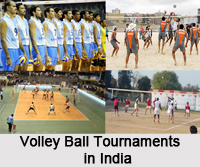
India"s Participations in Different Tournaments
Ever since the VFI has come into existence, the Indian team has participated in World Championships, Asian Games, Commonwealth Championships, Asian Championships and many other International Tournaments held in India and abroad. India won Gold medal at the Invitation Asian Meet at Japan in 1955. In the third and fourth Asian games that took place at Tokyo in 1958 and Jakarta in 1962, India won Bronze and Silver medals respectively. India got a major setback when no player was honoured with the Arjuna Award from 1963 to 1971. Ever since then, the Indian Volleyball Team has taken part in many competition of national and international stature.
Volleyball Federation of India was quick to popularize the game in India, and it was quick to fall in line with the World body`s desire to make the game popular. India happens to be one among the many nations where the Volleyball league was started. National Volleyball League Club Championship was spread across different centers culminating in a Final League.
Focus on Women"s Volleyball Game
The popularity of the game went to a new height when India received Gold medal at SAF games in 1987 at Kolkata, in the state of West Bengal. The Indian team, again, pocketed the Gold medal in 1991 at Colombo. After this, the women`s game started gaining popularity. Though they put up a good show in the 1993 SAF games at Dhaka, the women`s team is yet to make an impact as big as their male counterpart.
Arjuna Awardees for Volleyball
In India, many players won Arjuna Awards for Volleyball. Some of them include, Palaniswamy (1961), Nripjit Singh (1962), Balwant Singh (1972) after a 10 year gap, Malini Reddy, Shyam Sundar Rao, Ellamma, Jimmy George etc. Among these players, Jimmy George in particular, was a very talented player. He was the first Indian player to become a professional and was also regarded as one of the best ten players in the world in his time. Sadly though, he met a bad end dying in a car accident in Italy.
Indian Volley League
Indian Volley League is a professional volleyball league in India. It was launched by the Volleyball Federation of India in 2011. The inaugural edition featured six teams and the top players in the country. Chennai Spikers, Hyderabad Chargers, Karnataka Bulls, Kerala Killers, Maratha Warriors and Yanam Tigers are the prospective teams in Indian Volley League. 2011 Indian Volley League season was the debut season of the Indian Volley League, established by Volleyball federation of India in 2011. Indian Volley League commenced on the 29th May 2011 and ended on 24th June 2011.The Chennai Spikers were the champions of the inaugural edition.
Indian Volleyball Players
Balwant Singh Sagwal, Nripjit Singh Bedi, A. Ramana Rao, Yejju Subba Rao, Dalel Singh Ror, Ramavtar Singh Jakhar, Mohan Ukkrapandian, Suresh Kumar Mishra Cyril C. Valloor and many more are the famed volleyball players of India.
Indian Volleyball team is inching forward to the top list in the world. However, the game needs more publicity and awareness among all groups of people in order to develop Volleyball in India to the next level. The rural players need more motivation and to retain the good players from rural areas also needs financial help. Volleyball in India needs more technological and scientific training process as well.
Volleyball Federation of India
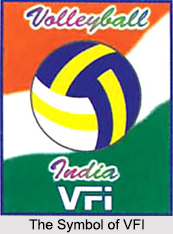 Volleyball Federation of India (VFI) came into existence in the year 1951 in Ludhiana (in the Indian state of Punjab). Ever since its inception, the federation has played a crucial role towards promoting the game in India. Prior to the formation of VFI, the game was managed by the Indian Olympic Association (IOA) and in those days the Interstate Volleyball Championship were held every two years from 1936 to 1950 for men only. The first ever match was held in the year 1936 at Lahore which comes in Pakistan currently.
Volleyball Federation of India (VFI) came into existence in the year 1951 in Ludhiana (in the Indian state of Punjab). Ever since its inception, the federation has played a crucial role towards promoting the game in India. Prior to the formation of VFI, the game was managed by the Indian Olympic Association (IOA) and in those days the Interstate Volleyball Championship were held every two years from 1936 to 1950 for men only. The first ever match was held in the year 1936 at Lahore which comes in Pakistan currently.
Terms of Volleyball
 Ball in Play:
Ball in Play:
The ball is in play from the moment of the hit of the service authorized by the first referee.
Ball out of Play:
The ball is out of play at the moment of the fault which is whistled by one of the referees; in the absence of a fault, at the moment of the whistle
Ball "In":
The bail is "in" when it touches the floor of the playing court including the boundary lines.
Ball "Out":
The ball is "out" when:
* The part of the ball which contacts the floor is completely outside the boundary lines;
* It touches an object outside the court, the ceiling or a person out of play;
* It touches the antennae, ropes, posts or the net itself outside the side bands;
* It crosses the vertical plane of the net either partially or totally outside the crossing space.
* It crosses completely the lower space under the net.
Playing the Ball
Each team must play within its own playing area and space. The ball may, however, be retrieved from beyond the free zone. The team is entitled to a maximum of three hits (in addition to blocking, for returning the ball. If more are used, the team commits the fault of: "Four Hits".
Consecutive Contacts
A player may not hit the ball two times consecutively.
Faults in Playing the Ball
* Four Hits: a team hits the ball four times before returning it.
* Assisted Hit: a player takes support from a team-mate or any structure/object in order to reach the ball within the playing area.
* Catch: the ball is caught and/or thrown; it does not rebound from the hit
* Double Contact: a player hits the ball twice in succession or the ball contacts various parts of his/her body in succession.
Ball at the Net
Ball Crossing the Net
The ball sent to the opponent`s court must go over the net within the crossing space. The crossing space is the part of the vertical plane of the net limited as follows:
* Below, by the top of the net;
* At the sides, by the antennae, and their imaginary extension;
* Above, by the ceiling
Bail Touching the Net
While crossing the net, the ball may touch it.
Bali in the Net
* A ball driven into the net may be recovered within the limits of the three team hits.
* If the ball rips the mesh of the net or tears it down, the rally is cancelled and replayed.
Player at the Net
* In blocking, a blocker may touch the ball beyond the net, provided that he/she does not interfere with the opponents` play before nor during the latter`s attack hit.
* After an attack hit, a player is permitted to pass his/her hand beyond the net, provided that the contact has been made within his/her own playing space.
Contact with the Net
 * Contact with the net by a player is not a fault, unless it is made during the action of playing the ball, or it interferes with the play.
* Contact with the net by a player is not a fault, unless it is made during the action of playing the ball, or it interferes with the play.
* A player penetrates into the opponents` court.
* A player touches the net or the antenna during his/her action of playing the ball or interferes with the play.
Service
The service is the act of putting the ball into play, by the back right player, placed in the service zone.
First Service in Set
The first service of the first set, as well as that of the deciding set (the 5th) is executed by the team determined by the toss. The other sets will be started with the service of the team that did not serve first in the previous set.
Service Order
The players must follow the service order recorded on the line-up sheet.
After the first service in a set, the player to serve is determined as follows
* When the serving team wins the rally; the player (or his/her substitute) who served before, serves again;
* When the receiving team wins the rally, it gains the right to serve and rotates before actually serving. The player who moves from the front right position to the back-right position will serve.
Blocking:
Blocking is the action of players close to the net to intercept the ball coming from the opponents by reaching higher than the top of the net. Only front-row players are permitted to complete a block.





